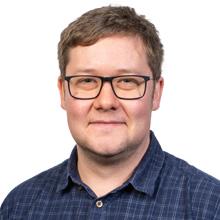
Andrew Green
Research Fellow (ARISE/Marie Curie)
Bateman Group
ORCID: 0000-0002-8297-0953
EditCareer Accelerator for Research Infrastructure Scientists
Bioinformatics

Research Fellow (ARISE/Marie Curie)
Bateman Group
ORCID: 0000-0002-8297-0953
EditI use Large Language Models and other ML techniques to provide automated curation for the non-coding RNA database RNAcentral, where traditionally curation time has been lacking.
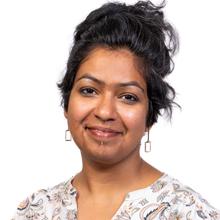
Arise Fellow
Protein Function Development
EditI am part of the UniProt team at EMBL-EBI, collaborating closely with the Pathogen Informatics Group. My project focuses on developing tools and methods for representing and visualising bacterial proteins and pan-proteome landscapes. The primary goals are to minimise data redundancy, preserve diversity, and explore variation in these biological datasets.

Research Fellow (ARISE)
Protein Data Bank in Europe
ORCID: 0000-0002-3048-5315
EditIn my project I use computer vision methods and bioimage analysis tools to identify structural similarities across the Protein Data Bank. My goal is to develop a method that enhances the classification of macromolecular structures and protein conformations, facilitating the use of AI-driven methods for predicting macromolecular complexes.

Research Fellow (ARISE)
Literature Services
ORCID: 0000-0001-9868-6271
EditI am working to develop a service to assist biocurators, built on top of the Europe PMC biomedical literature repository hosted by EMBL-EBI. The service I am developing will help biocurators better target their search for literature relevant to their databases, and assist them in quickly identifying the information they need within the article.
Structural biology
Research Fellow (ARISE)
McCarthy Team
ORCID: 0000-0002-1605-9619
EditI am developing an integrative approach combining X-ray footprinting, AlphaFold2 and molecular dynamics simulations to assist European structural biologists in investigating macromolecule interactions and validating structural predictions. This toolkit enhances the understanding of complex molecular interactions and provides valuable structural insights.
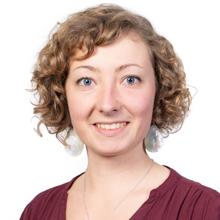
Research Fellow (ARISE)
Márquez Team
ORCID: 0000-0002-7085-6731
EditI am part of a computational team at EMBL-EBI and an experimental one at EMBL Grenoble. My project’s aim is to develop streamlined, fast and user-friendly tools (EnsembleFlex) to analyse protein ensembles, their dynamics and binding sites. It bridges experimental and computational research to enhance drug design and molecular insights.
GitHub – GitHub EnsembleFlex – ResearchGate – News article: changing career trajectory
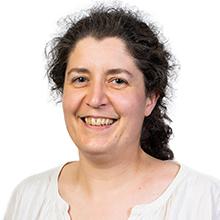
Research Fellow (ARISE/Marie Curie)
Protein Data Bank in Europe
ORCID: 0000-0002-9162-9159
EditIn my current project at the European Bioinformatics Institute I use Natural Language Processing (NLP), which is a branch of deep learning, to teach an algorithm to read and analyse scientific literature, specifically to extract knowledge about protein structures. The found information is then used to annotate the individual residues (building blocks) of protein structures in the public database PDBe.
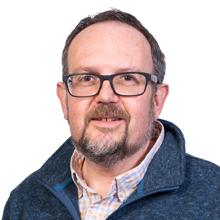
Research Fellow (ARISE)
Open Targets
ORCID: 0000-0002-4341-0320
EditResearch Fellow (ARISE)
Gene Editing and Virus Facility
EditIn my project we would like to develop a toolkit of all-in-one AAV constructs for one-step delivery of CRISPR components with the main aim to facilitate the generation of transgenic mice while simultaneously increasing editing rate and accuracy. The high versatility of our constructs will allow users to utilize our tools for different purposes beyond the generation of transgenic animals, including production of transgenic cell lines, epigenetic editing and even gene-therapy therapeutic applications.

Arise Fellow
EBI Eukaryotic Annotation
ORCID: 0000-0002-7223-6819
EditStudying genome diversity across species requires integrating diverse datasets from across the life sciences. I am developing a cloud-based data warehouse and analytical pipelines to link publicly available genomic data from Ensembl with biodiversity records from GBIF and ecological datasets. This system will enable spatial mapping of genomic features, allowing researchers to compare species genomes and analyse how their genomic architecture correlates with geographical distribution and environmental factors.
Research Fellow (ARISE)
Márquez Team
ORCID: 0009-0005-7869-1117
Edit
Research Fellow (ARISE)
Data Science Centre
ORCID: 0000-0002-0807-6363
EditMy project is to develop an open-source platform entitled Depictio, designed to help researchers easily create interactive, cloud-compatible dashboards for bioinformatics workflows. Depictio streamlines standardised data ingestion, QC monitoring, and result visualisation, enabling users to effectively design, customise, and deploy scalable dashboards adapted to cloud or local infrastructure.

Research Fellow (ARISE)
Márquez Team
ORCID: 0000-0001-8226-4218
Edit
Research Fellow (ARISE)
Light Imaging Facility
ORCID: 0000-0002-1232-4112
EditMy current project aims to advance imaging techniques for spatial omics. I improve the microscope’s spatial resolution by enhancing autocorrelation-based reconstruction, while my blind unmixing tool removes fluorophore cross-talk for highly multiplexed imaging. These methods could provide valuable tools to extract more information per imaging round, offering deeper insights into complex biological systems.
Research Fellow (ARISE)
Pepperkok Team
EditI engineer advanced laboratory automation strategies powered by online image analysis. I develop software to serve machine learning to robotic microscopes; deployments include a mobile laboratory in which collaborators survey plankton. At the bench, I develop photomanipulation methods to tag, sort, and perturb living cells in response to image feedback.
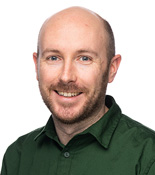
Research Fellow (ARISE)
Flow Cytometry Core Facility

Research Fellow (ARISE)
Duke Team
ORCID: 0000-0002-3561-7305
EditI am working to establish a novel X-ray phase-contrast imaging technique, using sandpaper to modulate the X-ray beam, as a user service at the P14 beamline of the PETRA III synchrotron (DESY, Hamburg). Compared to more established methods, this technique retrieves quantitative values and has benefits for imaging challenging samples.
Research Fellow (ARISE)
Prevedel Group
ORCID: 0000-0002-0871-8880
Edit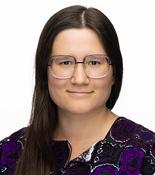
Research Fellow (ARISE)
Schwab Team
ORCID: 0000-0002-6089-3766
EditStructural biology
Research Fellow (ARISE)
Djinovic Group
ORCID: 0009-0003-7759-8557
EditI establish the pipeline for sample preparation for cryoEM analysis and my main objective is to make optimisation of cryoEM grids preparation fast and efficient. For that purpose I use statistical analysis and the approach is applied for EasyGrid device for automatic cryoEM grid preparation, developed at EMBL Grenoble.

Research Fellow (ARISE)
Mahamid Group
ORCID: 0000-0002-8046-0474
EditCryo-electron tomography (cryo-ET) enables high-resolution 3D cellular imaging, but identifying small or low-abundance macromolecules is challenging. This project develops fluorescently and structurally defined genetically encoded protein tags for precise in situ labeling. Machine learning automates localization, enhancing the scalability of cryo-ET structure determination.

Research Fellow (ARISE)
Papp Team
EditDevelopment of a cryo multimodal imaging automatized workflow, going from sample preparation (EMBL-designed EasyGrid machine) to data collection. This involves performing a multiscale study going from light microscopy (μm-resolution) to Cryo-ET (Å-resolution) passing through synchrotron-based techniques displaying nm resolution (X-ray fluorescence microscopy, Phase contrast imaging) to follow biotransformation processes on the same region of one sample.
Research Fellow (ARISE)
Kreshuk Group
ORCID: 0000-0002-2854-0119
EditCryo-Electron Tomography (CryoET) is a technique used to obtain three-dimensional representations of proteins in their native state. The level of detail of those representations is limited by the amount and quality of the data, and the high computational cost of the available algorithms to process it. In this ARISE project, I will address these issues from two different fronts: increase the amount of available data, and improve the overall performance of the algorithms. To achieve these goals, I will use state-of-the art methods of the fields of signal processing, data science and automation.
Tissue biology
Research Fellow (ARISE)
Prevedel Group
ORCID: 0000-0001-9620-8428
EditMy project aims to develop a novel Adaptive Optics approach for three-photon microscopy, extending the limits of intravital deep-tissue imaging. Bringing subcellular resolution to deeper tissue layers will enable better understanding of biological processes providing a powerful tool for neuroscience applications.
Microscopy, imaging, microfluidics

Research Fellow (ARISE)
Proteomics Core Facility
ORCID: 0000-0003-0747-4316
EditUnderstanding protein-protein interactions is key for exploring cellular mechanisms. My project aims to develop a Cross-Linking Mass Spectrometry (XL-MS) pipeline for complex protein mixtures and to establish a standardized protocol at the EMBL Proteomics Core Facility. This involves integrating peptide fractionation strategies and improving data analysis. A robust and reliable pipeline will provide deeper insights into protein structures, interaction networks, and structural dynamics across diverse biological systems, including non-model organisms.
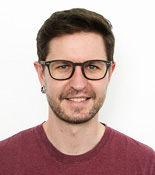
Research Fellow (ARISE)
McCarthy Team
My project aims to help researchers measure their biological sample using the synchrotron by automating the process. We are creating a complete workflow going from the sample preparation to the very final result: a 3D model of the sample at atomic resolution.
ALUMNI
Research Fellow (ARISE)
Márquez Team
ORCID: 0000-0001-9905-9464
EditI am working towards the incorporation of acoustic dispensing technology (ADE) into the existing fragment screening pipeline at the HTX platform, EMBL Grenoble, to set up a high-density crystallographic fragment screening pipeline. Together with the CrystalDirect harvester, this pipeline will enable faster and more efficient exploration of the chemical space around a target streamlining the early steps in the drug discovery process for users.
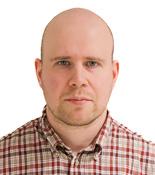
Research Fellow (ARISE)
Blanchet Team
ORCID: 0000-0001-6704-1702
EditMy name is Aleksi, and I am a structural biologist. Our team operates the P12 BioSAXS beamline at PETRAIII, tailored for biological macromolecules. One of the experimental possibilities is the time-resolved SAXS. My role as part of ARISE is facilitating, supporting, and developing TR-SAXS experiments for our users.

Research Fellow (ARISE)
Zimmermann Team
ORCID: 0000-0002-0291-045X
EditMy project is to develop a cryogenic super-resolution microscope based on a vacuum based cryo-stage design. This microscope will be integrated into a workflow for correlative cryogenic light and electron microscopy (cryo-CLEM).
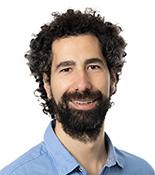
Research Fellow (ARISE)
Trivedi Group
ORCID: 0000-0002-1752-376X
EditI design, develop, and implement innovative solutions for handling 3D samples, such as embryos and organoids. Specifically, I focus on providing automated and user-friendly devices to enhance experimental throughput and ensure sample homogeneity. This improves experimental repeatability while enabling new research applications.
Research Fellow (ARISE)
McCarthy Team
ORCID: 0000-0003-3371-3552
EditI have extensive and varied experience working with biologists and their research subjects, being an experimental physicist and engineer. At some point I became deeply interested in microfluidics, and now I am transferring my developments from the research laboratories to the synchrotron radiation sources. My project is to develop scientific tools that will expand experimental capabilities of bioSAXS beamlines, in particular time-resolved studies.
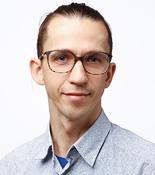
Enterprise Applications Specialist
IT Services
EditPersonal proteome profiling and individuals’ proteotypes could be critical to define disease phenotypes. My research represents a proof of concept that integration of personalised genome information with clinical proteomics data via proteogenomic approaches is not only an integral component of precision medicine and oncology, but could also provide sensitive information on individuals, raising potential ethical issues regarding their privacy risks.
Alumni
Postdoctoral Fellow (ARISE)
Zimmermann Group
ORCID: 0000-0002-6777-7012
EditMicrobial metabolism is the main route for removing pesticides from the environment, but there are knowledge gaps regarding the mechanistic details. This project develops new methods to systematically measure microbial pesticide biotransformation for hundreds of pesticides in parallel. Key technologies include mass spectrometry, chemical libraries, and microbial genetics.

Research Fellow (ARISE)
Saka Group
EditRecent advances in omics technology enable multiplexed imaging. Fluorescence microscopy can visualize many targets but often requires iterative staining. My project develops a one-step labeling workflow to visualize 15 targets, including spectrally overlapping dyes, which are then robustly assigned to their respective targets, streamlining the process and improving efficiency.

Research Fellow (ARISE)
Garcia Alai Team
ORCID: 0000-0001-9431-7794
EditI’m working to develop a pipeline for sample optimisation and characterisation of enzymes, which includes protein expression and purification, biophysical characterisation, enzymatic assays and X-ray crystallisation.
Research Fellow (ARISE)
Schneider Group
ORCID: 0000-0001-7924-3539
EditTrim Express Diffract (TED): a structural biology pipeline in support of white biotechnology by enabling qualitative experimental observations to rationalize enzymatic function.

Research Fellow (ARISE)
Microbiome Informatics
ORCID: 0000-0001-9132-8981
EditThe computational generation of protein families is crucial for facilitating the transfer of functional annotations from known sequences to previously uncharacterized ones. This is increasingly necessary given the vast number of sequences obtained through metagenomic analyses (e.g., MGnify). With this in mind, we have created an in-house Nextflow pipeline, called MGnifams, following nf-core best practices, to generate and annotate protein families from proteins derived from MGnify analyses. In parallel, we have created an nf-core pipeline, that is open-source and can be used by any research group interested in generating and updating their own protein families.
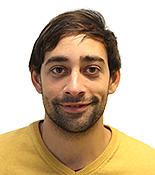
Research Fellow (ARISE)
Garcia Alai Team
ORCID: 0000-0003-4089-0434
EditI am developing user-friendly, interactive, open-source software for biophysical data analysis. The different tools facilitate the assessment of biomolecular interactions, complex formation, and sample quality, at least. The tools are available on the eSPC platform.
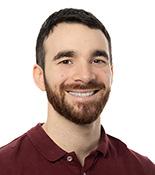
Research Fellow (ARISE)
Torres-Sánchez Group
ORCID: 0000-0001-5950-3751
EditWe aim to develop a high-performance GUI for accurate simulations of multiscale tissue models focused on 3D cell aggregates. This will help study how cells exert and resist forces, a key question in understanding tissue formation during embryo development and homeostasis.
Ries Group

Yehudi Bloch, ARISE Fellow at EMBL Hamburg, talks about the snow flea antifreeze protein. This is part of a series of stories about EMBL scientists and quirky, charming proteins that make them smile.
Edit
The programme will advance excellence in research infrastructure management and technology development.
Edit
Nicolas Foos, a postdoctoral fellow at EMBL Grenoble, talks about the implementation of a new method for in situ serial crystallography developed during his ARISE fellowship.
Edit
The ARISE summer school brought together fellows from across EMBL sites who are working on technology projects as part of EMBL’s Career Accelerator for Research Infrastructure Scientists (ARISE) progr…
EditFurther information on the programme can be found in the following sections.
Discover the EMBL groups who offered to host ARISE fellows.
Explore partner organisations involved in the ARISE programme.
Find information on how to apply for the ARISE2 programme.
Get in touch!